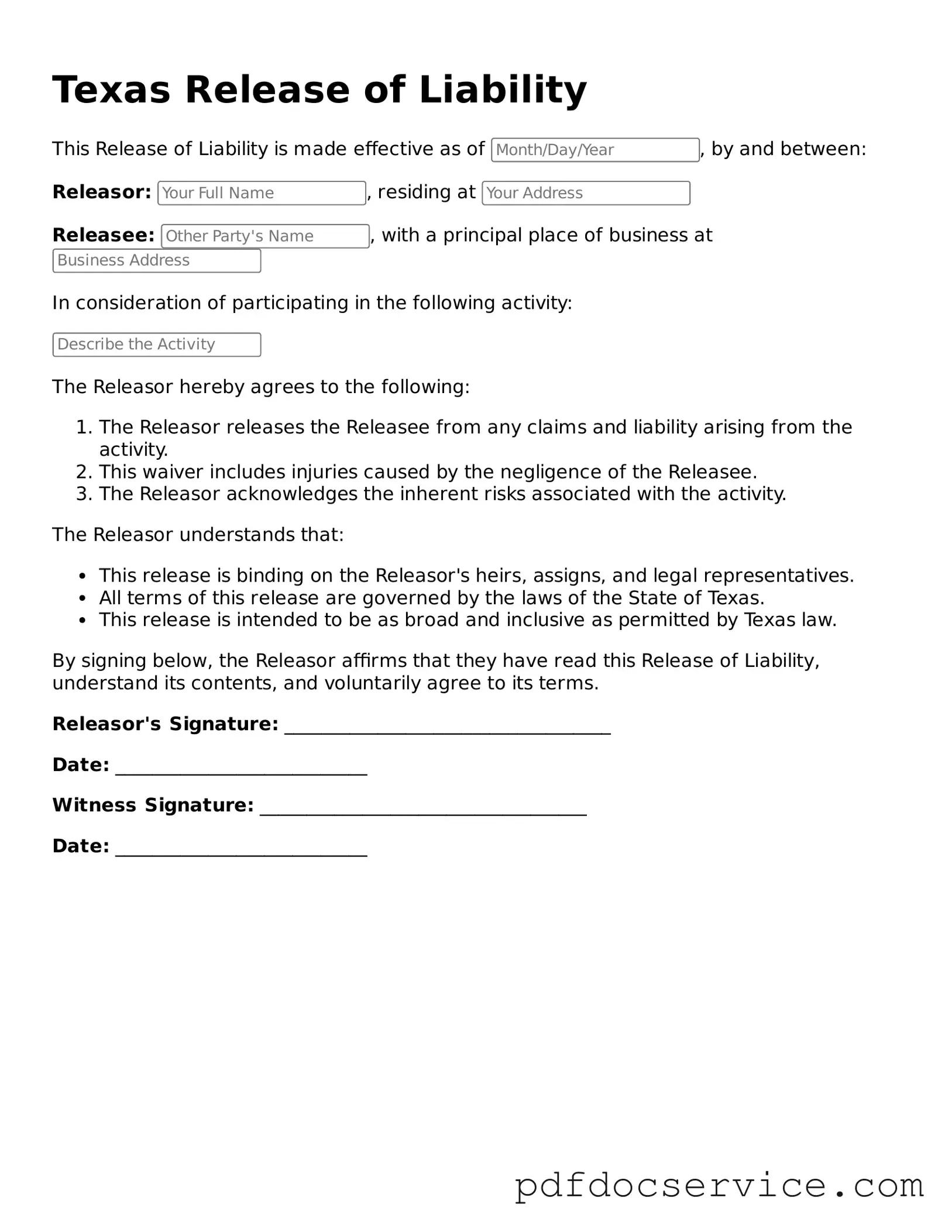The Texas Release of Liability form is a crucial document designed to protect individuals and organizations from legal claims resulting from injuries or damages that may occur during certain activities. This form is commonly used in various contexts, including sports events, recreational activities, and even certain business transactions. By signing this document, participants acknowledge the inherent risks associated with the activity and agree to waive their right to sue the organizers or sponsors for any injuries sustained. It outlines the responsibilities of all parties involved and specifies that the participant understands the risks. Additionally, the form often includes language about the voluntary nature of participation, emphasizing that individuals are not coerced into signing. Understanding the implications of this form is essential for both participants and organizers to ensure that everyone is aware of their rights and responsibilities. Properly executed, the Texas Release of Liability form can serve as a powerful tool in risk management, helping to prevent costly legal disputes while allowing individuals to engage in activities with a clearer understanding of their potential risks.
